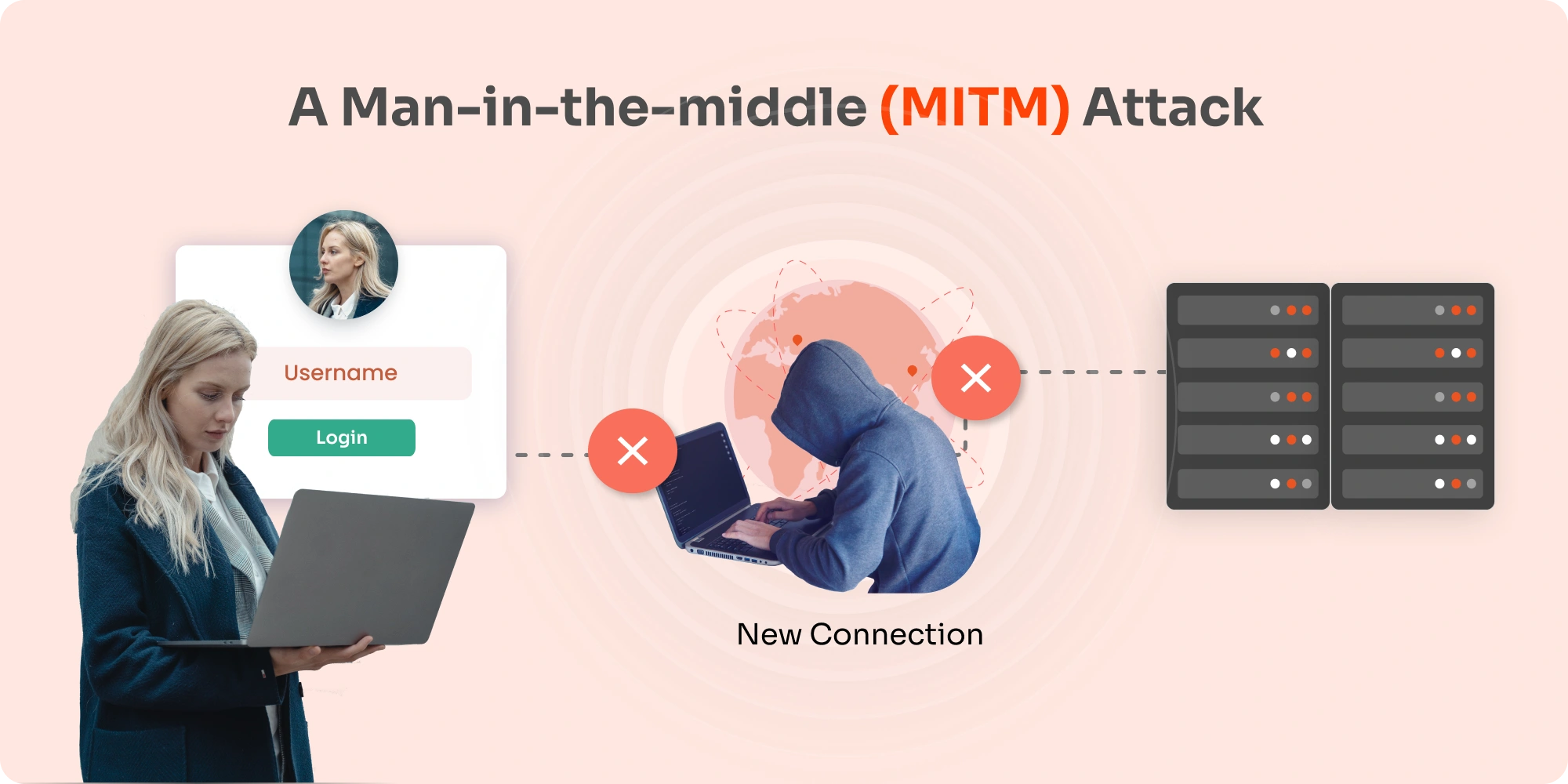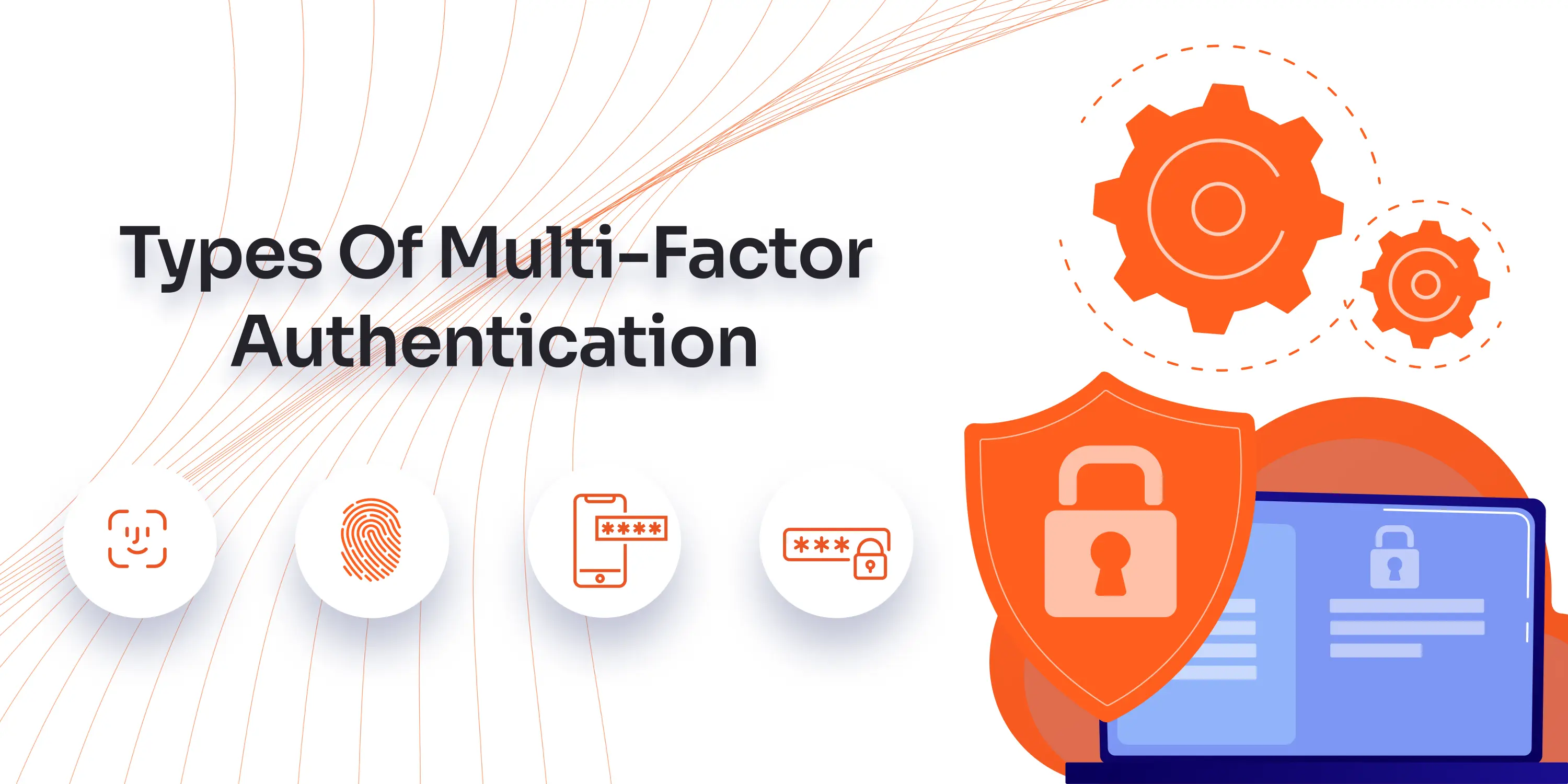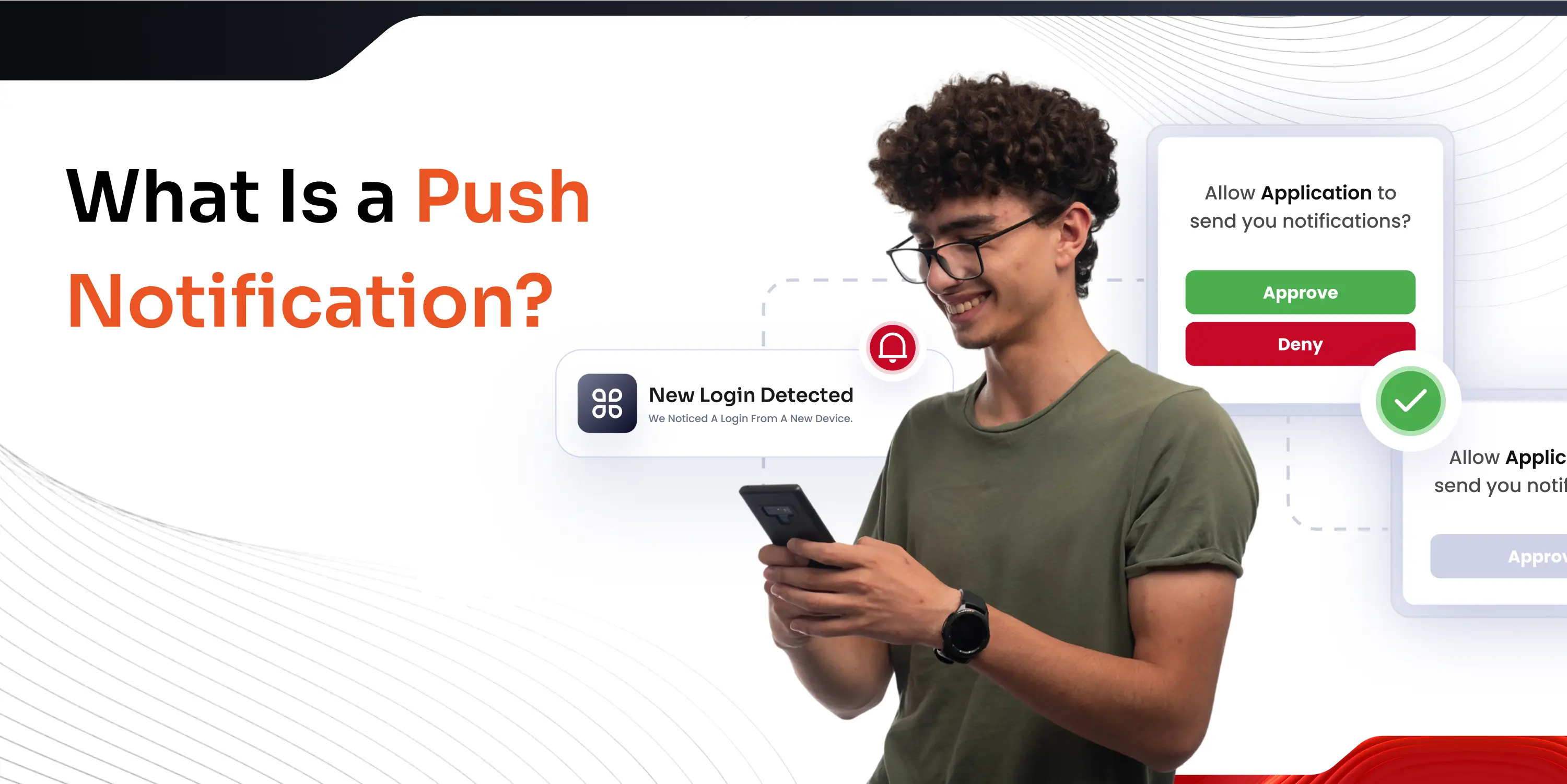In today's interconnected world, banks and financial institutions find themselves battling an ever growing wave of cyber attacks. When these digital defenses fail, the consequences extend far beyond money lost. Customer confidence crumbles and regulators come knocking with hefty fines. With more of our financial lives happening on screens rather than in branches, protecting these digital vaults has become absolutely critical. Strong authentication isn't just another box to check. It's what stands between financial institutions and potential disaster.
Multi-Factor Authentication (MFA) has emerged as a critical defense mechanism, adding layers of security beyond traditional passwords. By requiring multiple forms of verification, MFA in banking and MFA in finance significantly reduce the risk of unauthorized access. Solutions like miniOrange’s Authentication Solution offer tailored multi-factor authentication for online banking, helping institutions not only meet regulatory requirements but also strengthen their cybersecurity defenses and build lasting trust with customers.
Rise of Cybersecurity Threats to Banks and Financial Institutions
The banking and financial sector is facing an increasing number of cyberattacks. With more transactions happening online and businesses moving toward cashless operations, protecting customer assets has become the top priority for cybersecurity in digital banking. Cybercrimes today impact not just customers but also banks, which must spend substantial resources to recover lost data, manage legal issues, and rebuild customer trust after an attack.
Security experts in the banking sector now deal with a wide range of cyber threats like Trojans, Rock Phish, phishing, pharming, spear phishing, session hijacking, man-in-the-middle attacks, and man-in-the-browser attacks. While the techniques differ, the ultimate goal remains the same: stealing sensitive information such as usernames, passwords, credit card numbers, and social security details. The core issue is that traditional credentials are static and rarely change. Once stolen, they allow attackers to impersonate users and commit fraud easily. Although end-consumers suffer losses, banks and financial institutions bear the bigger burden, covering refunds, investigation costs, fines, and facing reputation damage.
This growing threat environment highlights why strong bank authentication methods are essential. Relying only on passwords is no longer enough. Implementing multi-factor authentication for online banking through solutions like miniOrange’s Authentication Solution adds additional security layers, making it far harder for attackers to breach accounts. By adopting modern MFA in banking and MFA in finance practices, financial institutions can safeguard customer data, prevent fraud, and maintain the trust that is crucial to their long-term success.
Explore these threats in-depth: Top 15 Cybersecurity Threats in 2025.
What is Multi-factor Authentication (MFA)?
Multi-Factor Authentication (MFA) is a security method that requires users to verify their identity through two or more independent credentials before they can access sensitive resources like applications, online accounts, or private networks. Instead of relying only on a username and password, MFA adds extra layers of security, such as one-time passwords (OTPs), authentication apps, or biometrics, making it much harder for attackers to break in.
As a critical part of modern Identity and Access Management (IAM) strategies, MFA helps organizations significantly reduce the risk of unauthorized access and cyber threats. The miniOrange MFA Product offers a robust, easy-to-deploy solution with support for a wide range of authentication methods, giving businesses the flexibility to secure every user interaction without compromising the user experience.
Why Banks and Financial Institutions Need MFA
Traditional login methods relying solely on user IDs and passwords are insufficient to protect banking systems today. Cybercriminals can steal credentials through phishing, malware, or brute force attacks using automated tools to guess passwords. While account lockouts after multiple failed attempts provide some protection, they aren't foolproof against modern hacking techniques. This vulnerability makes Multi Factor Authentication (MFA) essential for financial institutions, as it requires users to verify their identity through multiple methods like passwords (knowledge), security tokens or smartphones (possession), and biometrics (inherence).
MFA significantly strengthens security in banking and finance by adding multiple verification steps, making unauthorized access far more difficult while improving access control through secure authentication at every stage. Financial institutions can implement robust protection through solutions like the miniOrange MFA Product, which offers tailored authentication methods designed specifically for secure banking environments.
- Protecting Sensitive Customer and Transaction Data Banks handle large volumes of highly sensitive information — from personal details to financial transactions. Bank authentication with strong MFA ensures that even if one credential is compromised, additional verification layers prevent unauthorized access, safeguarding customer data and financial assets.
- Complying with Financial Regulations (e.g., PCI DSS, FFIEC, GDPR) The financial sector must meet strict security regulations like PCI DSS, FFIEC, and GDPR. Implementing MFA in finance not only strengthens security but also helps banks stay compliant, avoiding heavy fines and legal issues related to data breaches.
- Preventing Phishing, Credential Theft, and Account Takeover Phishing attacks and credential theft remain two of the most common ways cybercriminals target banking users. MFA acts as a strong barrier against these threats. Even if a password is stolen, attackers still cannot access the account without the second (or third) authentication factor.
- Building Customer Trust with Secure Authentication Customers today expect their banks to protect their accounts with the highest level of security. Offering secure and seamless multi-factor authentication for online banking builds customer confidence, improves user experience, and strengthens loyalty in a highly competitive market.
Benefits of miniOrange MFA Solution
miniOrange's Multi-Factor Authentication (MFA) solution adds an extra layer of security across banking and financial platforms, enabling secure access without compromising user experience. Learn why MFA is critical for modern security as our solution helps reduce fraud, streamline operations, and enhance customer trust. This solution is ideal for organizations seeking scalable, low-friction authentication across digital channels. Whether it's MFA in finance or multi-factor authentication for online banking, miniOrange ensures data integrity, compliance, and peace of mind.
1. Stronger Fraud Prevention
Cybercriminals continuously target financial systems with credential stuffing, phishing, and brute-force attacks. miniOrange MFA mitigates these risks by requiring multiple forms of identity verification, something you know (password), something you have (OTP or token), and something you are (biometrics). This layered approach drastically reduces the likelihood of unauthorized access, especially in high-risk environments like bank authentication.
The solution is built to detect and block suspicious login attempts using context-aware MFA, analyzing device, location, and behavior patterns before granting access. This intelligent defense system strengthens MFA in banking, protecting both institutional data and customer accounts.
2. Reduced Operational Risk
Financial institutions often face risks due to insider threats, credential theft, and human error. miniOrange MFA enforces consistent, policy-driven authentication workflows, reducing the chance of system compromise through weak or reused passwords. With centralized admin controls and detailed audit trails, banks can maintain compliance with regulations while minimizing internal security gaps.
Automating verification and access protocols also decreases the need for manual interventions, reduces help desk loads, and ensures smooth operations, making it an essential tool for MFA in finance environments.
3. Enhanced Customer Experience
While security is critical, user friction can’t be ignored. miniOrange MFA supports passwordless and biometric logins, enabling seamless, secure transactions for customers accessing online banking platforms. With features like push-based authentication and adaptive login flows, users get quick access without unnecessary hurdles.
The platform’s flexibility also means institutions can customize authentication methods based on customer risk profiles. This balances convenience with control, making MFA in banking user-friendly while remaining secure.
4. Cost-Effective Security Investment
Investing in miniOrange MFA is a strategic move for banks and financial services looking to future-proof their cybersecurity infrastructure. It eliminates the need for expensive hardware or major system overhauls, offering cloud-ready deployment options with minimal IT disruption.
Moreover, by reducing fraud losses, lowering support tickets, and enabling compliance with cyber insurance and data protection laws, miniOrange provides long-term value. It’s a cost-effective security investment that aligns with both IT and business priorities for organizations adopting multi-factor authentication for online banking.
Types of MFA Methods
Multi-Factor Authentication (MFA) relies on the combination of different factors to verify a user’s identity. These factors fall into distinct categories, each representing a different type of credential. By requiring two or more of these from separate categories, MFA strengthens login security and helps prevent unauthorized access.
1. Knowledge Factor (Something You Know)
This factor includes information that only the user should know. Common examples are:
- Passwords or PINs
- Security questions (e.g., "What is your mother’s maiden name?")
- One-Time Passwords (OTPs) generated or delivered via email or SMS
While traditional, this method can be vulnerable if used alone, which is why it's often combined with other factors in MFA.
2. Possession Factor (Something You Have)
This involves a physical object or device the user possesses. It is commonly used in:
- Hardware tokens or smart cards
- Mobile phones (via OTP apps like Google Authenticator or Authy)
- SIM-based verification through SMS or voice call OTPs
- Push notifications sent to a trusted device
The possession factor is especially prominent in multi-factor authentication for online banking, where smartphone-based verification is now the norm.
3. Inherence Factor (Something You Are)
This factor uses biometric characteristics unique to the individual. It's increasingly adopted in MFA in banking due to its accuracy and user convenience. Examples include:
- Fingerprint scans
- Facial recognition
- Retina or iris scans
- Voice recognition
4. Location Factor (Somewhere You Are)
This optional factor assesses the geographic location of the login attempt. For instance, if a user who typically logs in from India suddenly tries to access the account from Europe, the system may trigger additional verification steps.
5. Time Factor (When You Access)
This checks the time of access. If login is attempted during unusual hours (e.g., 3 AM when the user usually logs in during work hours), it may be flagged as suspicious, prompting extra authentication.
miniOrange's MFA Solution
miniOrange offers a robust MFA solution designed to verify user identity with high assurance before granting access to critical systems, applications, or data. By combining multiple verification factors: such as a password (something you know), a device or token (something you have), and biometrics (something you are). miniOrange significantly strengthens access security.
Whether you're securing user logins, protecting cloud platforms, or managing access to sensitive financial data, miniOrange’s MFA ensures that only authorized individuals get through, making it a smart defense against modern cyber threats.
MFA Methods Supported by miniOrange
miniOrange offers flexibility with 15+ MFA authentication methods, enabling organizations to tailor security based on user needs and risk levels. These methods ensure secure, seamless access while meeting compliance and usability requirements.
- SMS & Phone Callback: Receive a one-time passcode or verification call on your registered mobile number to complete the second step of authentication.
- TOTP via Authenticator Apps: Generate time-based OTPs using trusted third-party apps like Google Authenticator or Microsoft Authenticator for a secure login experience.
- miniOrange Authenticator App: Access soft tokens, push notifications, or QR codes directly through the miniOrange mobile app for convenient, real-time authentication.
- Email Verification: Login credentials, OTPs, or secure links are sent to your registered email address for identity verification.
- Hardware Tokens: Use a physical USB or key-based token to generate time-sensitive codes, offering strong offline authentication.
- Security Questions: Answer predefined personal questions known only to you, serving as an additional layer of identity verification.
Adaptive Authentication/Risk-Based Authentication
miniOrange's Adaptive Authentication is an intelligent, context aware extension of Multi Factor Authentication (MFA) that dynamically adjusts security requirements based on real time risk assessment. Also called Risk-Based Authentication, it analyzes contextual signals like user behavior, device IP, geolocation, access time, and resource sensitivity to determine whether to require additional verification, permit seamless access, or block the attempt entirely.
For example, when a bank employee accesses critical systems like SWIFT, miniOrange evaluates their role, login time, device, and historical patterns. Any abnormal activity triggers stronger authentication, while trusted behavior enables smooth access. This risk based approach assigns real time security scores to every transaction, ensuring optimal protection without compromising user experience. By automatically adapting to threats, it makes banking MFA both highly secure and operationally efficient.
How miniOrange Implemented MFA for Punjab National Bank (PNB)
Punjab National Bank (PNB), a government-owned multinational bank, required a high level of data privacy and transaction security, especially in its department handling global transactions. One of the major challenges was securing access to the SWIFT application and several SAML-compliant systems used for managing foreign currencies. Although these applications were hosted within PNB’s private network, user authentication relied solely on Active Directory-based usernames and passwords.
This setup posed a serious security risk, as credentials could be reused or exploited by unauthorized users. Recognizing the potential impact of unauthorized access on sensitive financial systems, PNB decided to strengthen its authentication mechanism with an added layer of verification.
miniOrange stepped in with a customized on-premises multi-factor Authentication (MFA) solution tailored to PNB’s needs. The solution enabled users to authenticate using their existing Active Directory credentials, followed by a second factor, ranging from OTPs, Google Authenticator, and push notifications to hardware tokens. This robust MFA setup helped seal identity gaps and significantly minimized the risk of credential misuse.
Start your Free Trial or Contact Us to discuss a custom MFA solution that fits your organization.
Conclusion
In secure digital environments like banking, distinguishing between authentication and authorization (granting system permissions) is crucial. While authorization defines access levels, weak authentication can compromise even the strictest controls, making Multi-Factor Authentication (MFA) essential. By combining OTPs, biometrics, or push notifications, MFA ensures only verified users gain entry, fortifying the entire security framework from the ground up.
For financial institutions safeguarding sensitive data and compliance, MFA is indispensable. It not only meets regulatory standards but also builds customer trust by tightly linking authentication with precise authorization. To explore how MFA compares to other security methods, read our guide on authentication types.
FAQs
1. Does MFA slow down banking operations?
No, modern MFA solutions are designed to be fast and seamless. With features like OTPS, biometrics, push notifications, and adaptive authentication, users can securely access services without delays.
2. Can MFA work with mobile banking apps?
Yes, MFA integrates easily with mobile banking apps. It supports methods like in-app push, biometrics, and OTPs, ensuring both strong security and smooth user experience on mobile platforms.
3. Is MFA expensive to implement?
Not necessarily. Many MFA solutions, including cloud-based options, are cost-effective and scalable. They help reduce fraud losses and compliance risks, making them a smart long-term investment.





Leave a Comment